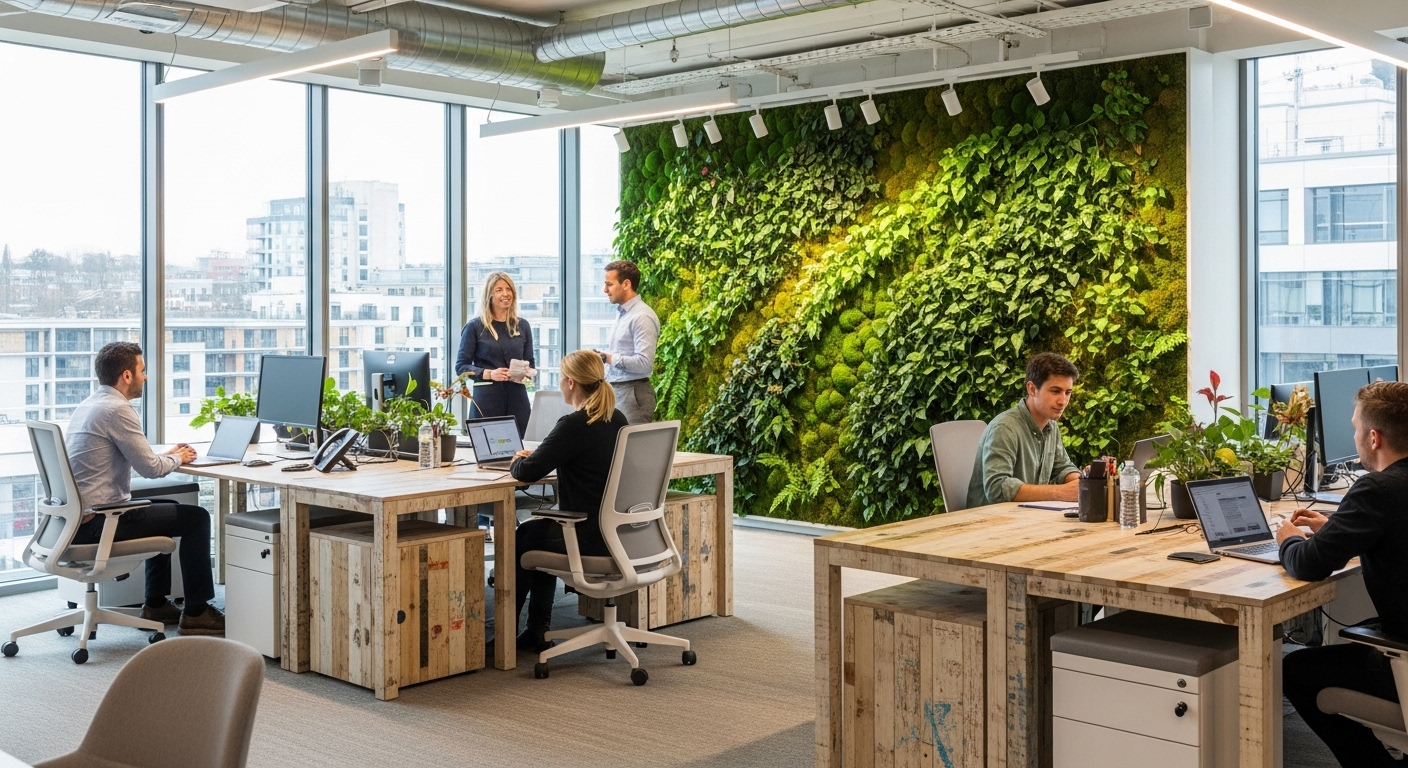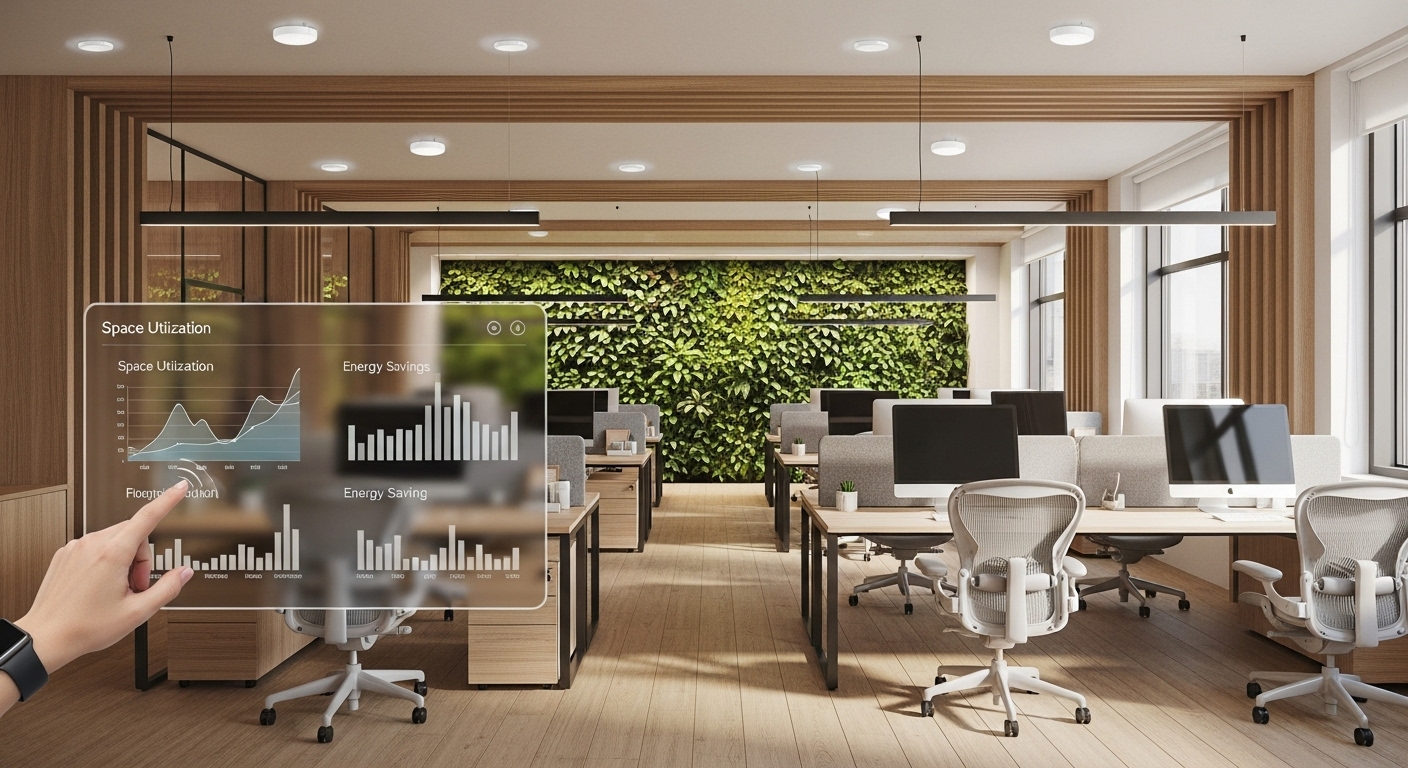San Francisco has long been a global epicenter for innovation, a place where forward-thinking ideas reshape industries. Today, that same spirit of progress is being applied to the very spaces where work happens. The concept of a sustainable workspace is evolving from a niche interest into a strategic imperative, driven by environmental responsibility, the fierce competition for top talent, and a growing understanding of the link between physical environments and human performance. This shift is about more than installing solar panels or recycling bins; it’s a holistic reimagining of the office as an ecosystem that supports people, the planet, and profitability. As businesses navigate the future of work, the principles of sustainability—encompassing energy efficiency, material health, and employee well-being—are becoming the foundational blueprint. This article explores the key pillars of this movement, from biophilic design and smart technology to the circular economy, and examines how these elements are creating healthier, more inspiring, and profoundly more effective work environments.
The rise of biophilic design in urban environments
Biophilic design is the practice of connecting people and nature within our built environments. In a dense urban landscape like the Bay Area, this connection is not a luxury but a necessity for human well-being. The core principle is that humans have an innate tendency to seek connections with nature, and incorporating natural elements into workspaces can have profound psychological and physiological benefits. This goes far beyond placing a few potted plants on a desk. It involves a strategic integration of natural light, living green walls, natural materials like wood and stone, and views of the outdoors. Studies have consistently shown that biophilic workplaces can reduce stress, improve cognitive function, and enhance creativity and productivity. For example, access to natural light has been linked to better sleep and reduced eye strain, while the presence of indoor plants can improve air quality by filtering out common pollutants. In a city where the pace of work can be relentless, creating these moments of natural connection provides a vital counterbalance, fostering a calmer and more focused atmosphere. This approach also redefines the aesthetic of a modern office, moving away from sterile, uniform designs towards spaces that feel organic, vibrant, and alive, ultimately making the workplace a more desirable destination for employees.
Smart technology as the backbone of energy efficiency
In a city at the forefront of the tech revolution, it is no surprise that technology is the engine driving sustainability in workspaces. Smart building technology creates a ‘digital nervous system’ for an office, optimizing resource consumption with a level of precision previously unimaginable. This ecosystem is built on a network of Internet of Things (IoT) sensors that collect real-time data on everything from occupancy levels and temperature to ambient light. This data is then fed into a centralized building management system that makes intelligent, automated adjustments. For instance, an advanced HVAC system can learn occupancy patterns and selectively heat or cool zones only when they are in use, drastically reducing energy waste. Similarly, smart lighting systems adjust artificial light based on the amount of natural daylight available, ensuring optimal visibility while minimizing electricity consumption. Leading tech companies in San Francisco are not just developing this technology; they are implementing it within their own headquarters, turning their offices into living laboratories for energy efficiency. This integration of smart tech does more than lower utility bills; it provides valuable data analytics that can inform future design decisions and operational strategies, creating a virtuous cycle of continuous improvement and solidifying the business case for green building investments.
Embracing the circular economy in office outfitting
The traditional model of office design and furnishing is linear: source, use, and dispose. This approach generates enormous waste, with millions of tons of office furniture ending up in landfills each year. The circular economy offers a radical and sustainable alternative. Instead of a linear path, it creates a closed-loop system where resources are kept in use for as long as possible. In the context of a workspace, this means prioritizing materials and products that are durable, repairable, and ultimately recyclable or compostable. It starts with sourcing furniture made from reclaimed wood, recycled plastics, or other sustainable materials. It extends to choosing modular designs that can be easily reconfigured, repaired, or upgraded rather than replaced entirely. Some forward-thinking companies are now ‘designing for disassembly,’ creating office components that can be easily taken apart at the end of their life, with each material channeled back into the manufacturing process. This model also encourages new business practices, such as furniture-as-a-service, where companies lease their office furnishings, and the provider is responsible for maintenance, repairs, and end-of-life management. Embracing a circular approach significantly reduces a company’s environmental footprint, minimizes waste, and often leads to long-term cost savings by breaking the cycle of constant consumption and disposal.
Water conservation strategies in a changing climate
For any organization operating in California, water conservation is a critical aspect of sustainability. The state’s history of droughts has made water a precious resource, and sustainable workspaces must incorporate intelligent strategies to minimize its use. The first line of defense is the installation of high-efficiency and low-flow fixtures, including toilets, urinals, and faucets, which can reduce water consumption by 30% or more compared to standard models. Beyond these basics, more advanced systems offer even greater savings. Rainwater harvesting systems, for example, can capture and store rainwater from a building’s roof, which can then be used for non-potable purposes like landscape irrigation or flushing toilets. Similarly, greywater recycling systems take water from sinks and showers, treat it on-site, and reuse it for the same purposes. These closed-loop systems dramatically reduce a building’s reliance on municipal water supplies. Sustainable landscaping, or xeriscaping, also plays a crucial role by using native, drought-tolerant plants that require minimal irrigation. By integrating these multi-faceted water conservation strategies, businesses can not only achieve significant operational savings but also demonstrate responsible stewardship of a vital regional resource, aligning their corporate values with the environmental realities of their location.
The human-centric approach: wellness and productivity
The modern sustainable workspace understands that its most valuable asset is its people. Therefore, sustainability is increasingly defined not just by environmental metrics but by its impact on human health and well-being. This human-centric approach, often guided by standards like the WELL Building Standard, focuses on creating environments that actively support the physical and mental health of employees. A key component is ensuring superior indoor air quality through advanced filtration systems and the use of low-VOC (volatile organic compound) paints, adhesives, and furniture, which reduces occupants’ exposure to harmful chemicals. Acoustic design is another critical element, with spaces zoned to provide both quiet areas for focused work and vibrant zones for collaboration, mitigating noise pollution that can cause stress and distraction. In the highly competitive talent market of San Francisco, a workplace that visibly invests in employee wellness becomes a powerful tool for attraction and retention. Amenities that support a healthy lifestyle, such as fitness centers, meditation rooms, and access to healthy food options, are no longer perks but essential components of a holistic and sustainable workplace strategy that proves a company cares about its employees’ long-term health, not just their immediate output.
Navigating green certifications and local regulations
For businesses committed to creating sustainable workspaces, third-party certifications and local regulations provide both a clear roadmap and a credible benchmark. Globally recognized standards like LEED (Leadership in Energy and Environmental Design) offer a comprehensive framework for designing, constructing, and operating high-performance green buildings. A LEED certification signals to employees, clients, and investors that a workspace meets rigorous standards for energy efficiency, water conservation, and indoor environmental quality. Similarly, the WELL Building Standard focuses specifically on features that support and advance human health and wellness. In addition to these voluntary certifications, businesses must navigate local and state-level requirements. California’s Green Building Standards Code, known as CALGreen, sets mandatory minimums for new construction and major renovations, covering everything from water efficiency to waste diversion. The city of San Francisco often has its own progressive ordinances that may exceed state requirements, particularly concerning recycling, composting, and energy performance. While navigating this regulatory landscape can be complex, it also provides a clear mandate for action. By aiming to not just meet but exceed these standards, companies can future-proof their assets, mitigate regulatory risk, and position themselves as leaders in corporate responsibility, turning compliance into a competitive advantage.
The tangible ROI of a sustainable workspace
While the ethical and environmental arguments for sustainable workspaces are compelling, the business case is equally strong. Investing in green design and operations delivers a tangible return on investment across multiple fronts. The most direct financial benefit comes from reduced operational costs. Energy-efficient lighting, smart HVAC systems, and water-saving fixtures lead to significantly lower utility bills year after year. These savings can be substantial, often paying back the initial investment in green technologies within a few years. Beyond direct savings, the impact on human capital is profound. Workplaces designed for well-being and productivity have been proven to reduce absenteeism and improve employee retention. The cost of replacing an employee can be substantial, so any improvement in retention directly benefits the bottom line. Furthermore, a demonstrable commitment to sustainability enhances a company’s brand reputation. In an era where consumers and potential employees alike are increasingly eco-conscious, a green workspace is a powerful statement of corporate values. This can attract top talent, appeal to a wider client base, and even make a company more attractive to investors who use Environmental, Social, and Governance (ESG) criteria in their decision-making. Ultimately, a sustainable workspace is not an expense but a strategic investment that yields dividends in financial performance, talent management, and brand equity.
In conclusion, the movement towards sustainable workspaces represents a fundamental evolution in how we think about the office. It’s a shift from viewing buildings as static containers for work to seeing them as dynamic ecosystems that can actively enhance human potential and environmental health. The journey from the iconic fog to a vibrant green future is well underway, with principles of biophilic design, smart energy management, circular material use, and human-centric wellness becoming the new cornerstones of workplace strategy. For a city built on innovation, this is the next frontier. Sustainable workspaces are no longer a ‘nice-to-have’ but a critical component of a resilient, competitive, and forward-thinking business. By investing in these principles, companies are not only reducing their carbon footprint but are also building more engaged, productive, and loyal workforces. The future of work is not just flexible or hybrid; it is inherently sustainable, creating value that extends from the balance sheet to the biosphere.





